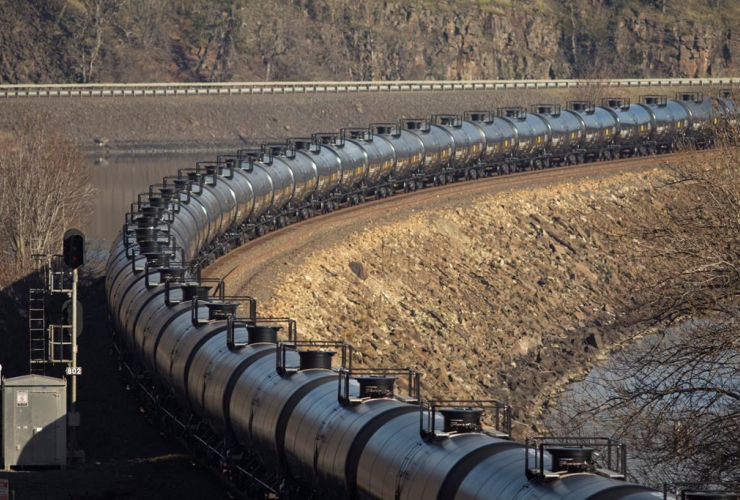By Lauren Krugel.
A rail company is getting ready to launch a feasibility study this spring into its plan to send trains full of oilsands bitumen from Fort McMurray, Alta., to Alaska.
From Delta Junction, in the Alaska interior, the oil would move in an existing pipeline — currently running well below its capacity — to the port of Valdez, where it would be loaded onto tankers and shipped to Asia. The railway would run about 2,400 kilometres.
Under the proposal from G Seven Generations Ltd., First Nations would hold a 50 per cent equity ownership stake in the project.
G Seven Generations CEO Matt Vickers, who has northwestern B.C. First Nations roots, said consulting with indigenous peoples along the railway’s proposed route early in the process is key.
So far, support has been strong and the Assembly of First Nations has endorsed the concept, he said.
"If you don’t have early engagement with the indigenous people — whoever’s land you’re on, wherever it is in the world — I don’t believe the project is going to work," he told the Arctic Oil and Gas Symposium on Thursday.
Last month, a preliminary study by the Van Horne Institute — backed by a $1.8−million grant from the Alberta government — found there’s merit to the idea. It estimated a project with a capacity of up to 1.5 million barrels a day could cost as much as $34 billion.
The next step will involve doing a detailed feasibility study that will narrow down the railway’s precise route. Vickers said he wants that work to get underway before leaves return to the trees this spring so that the company can do survey work from the air.
The trains would carry raw bitumen in heated railcars. In the event any of that spills from one of the company’s specially designed cars, cleanup would be relatively straightforward, said Vickers.
"It’s going to come out like molasses and you’re going to be able to clean it up with a shovel," he said.
Assuming a two−year regulatory review process, trains could be shipping about a million barrels a day by 2020. That would be about the same capacity as the proposed Alberta−to−Atlantic Energy East Pipeline, which has been contending with stiff political opposition.
It would undergo a different regulatory process than the one for Energy East and other interprovincial pipelines — with Transport Canada reviewing the proposal, not the National Energy Board.
Like the Keystone XL pipeline that U.S. President Barack Obama nixed in November after seven years of political wrangling, the G Seven Generations proposal would need U.S. permission to cross the border.
Vickers said the Alaska governor and Valdez mayor are keen on the proposal, so he’s not expecting politics to be as much of a headwind.
Yukon Energy, Mines and Resources Minister Scott Kent said he also expects the permitting process to be less complicated than it was for Keystone XL.
"There’s not as many landowners as you’d find as a project like Keystone XL," he said.
"But that said, all of these projects would require environmental screening and have to undergo that scrutiny so that we manage the environmental risk as best we can."



Comments